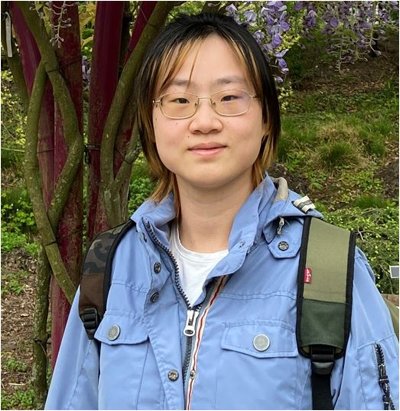Single-step Polyelectrolyte Film Formation by Evaporation-induced Complexation
Jiaying Li is a PhD student in the department Membrane Science & Technology. Supervisors are prof.dr.ir. W.M. de Vos from the faculty of Science & Technology and prof.dr. J. van der Gucht from Wageningen University.
 The world consists of all kinds of matter that, chemically, are made of atoms and molecules, interacting through different forces. In the introduction, we discuss a brief history of material science, including the origin of plastics. Although efforts are being made to reduce plastic pollution, there is much more that needs to be done. Reversible interactions, which are individually weaker than covalent bonds, have the potential to cooperatively form a strong network. This thesis, as an example, focuses on electrostatic interactions that allow the formation of polyelectrolyte complexes (PECs). As charged polymers, polyelectrolytes (PEs) are water soluble, but together with oppositely charged PEs, they can form insoluble PECs. Conventionally constructed by layer-by-layer (LbL), polyelectrolyte multilayers (PEMs) show versatile functionalities. However, in our approach, we use an evaporative base to uncharge weak polycations in the solution. In this way, PEC complexation happens during evaporation, allowing the formation of a PEC coating in a single step.
The world consists of all kinds of matter that, chemically, are made of atoms and molecules, interacting through different forces. In the introduction, we discuss a brief history of material science, including the origin of plastics. Although efforts are being made to reduce plastic pollution, there is much more that needs to be done. Reversible interactions, which are individually weaker than covalent bonds, have the potential to cooperatively form a strong network. This thesis, as an example, focuses on electrostatic interactions that allow the formation of polyelectrolyte complexes (PECs). As charged polymers, polyelectrolytes (PEs) are water soluble, but together with oppositely charged PEs, they can form insoluble PECs. Conventionally constructed by layer-by-layer (LbL), polyelectrolyte multilayers (PEMs) show versatile functionalities. However, in our approach, we use an evaporative base to uncharge weak polycations in the solution. In this way, PEC complexation happens during evaporation, allowing the formation of a PEC coating in a single step.
The first successful demonstration of evaporation-induced complexation is the pair: polyethylenimine (PEI) and poly(acrylic acid) (PAA). To achieve one-step preparation, ammonia is used to prepare a high pH environment in which PEI remains uncharged upon mixing. The resulting films are dense and transparent, while they also show good oxygen barrier properties (<4 cm3·m–2·day–1·atm–1). From PEI and PAA, which are two weak PEs, we move on to PEI and poly(4-styrenesulfonic acid) (PSS), one weak PE and one strong PE, possibly also allowing stronger ionic interactions. However, cracking occurs. PEI/NaPSS films are also prepared as comparison, where no polyelectrolyte complexation happens. From the mechanical tests, we confirm that the observed PEI/PSS brittleness stems mainly from the strong ionic crosslinking instead of chain entanglements. Targeting the brittleness of PEI/PSS, we focus on introducing different plasticizers such as salt, polyols, and ionic liquids (ILs). Small molecule polyols and amphiphilic ILs show effective plasticization while not compromising transparency. In the end, we aim to better understand the PEI/PSS film formation by varying the base type and adding cosolvents. Three bases with different volatility are chosen: ammonia, dimethylamine, and NaOH. A turbid intermediate phase is observed for ammonia samples as an indication that PEC network is forming which is confirmed by the tracked pH. To conclude, this thesis showcases a novel single-step method to fabricate PEC solid films. The outlook further discusses possible directions to explore this topic both from the point of view of fundamental understanding and possible applications.
